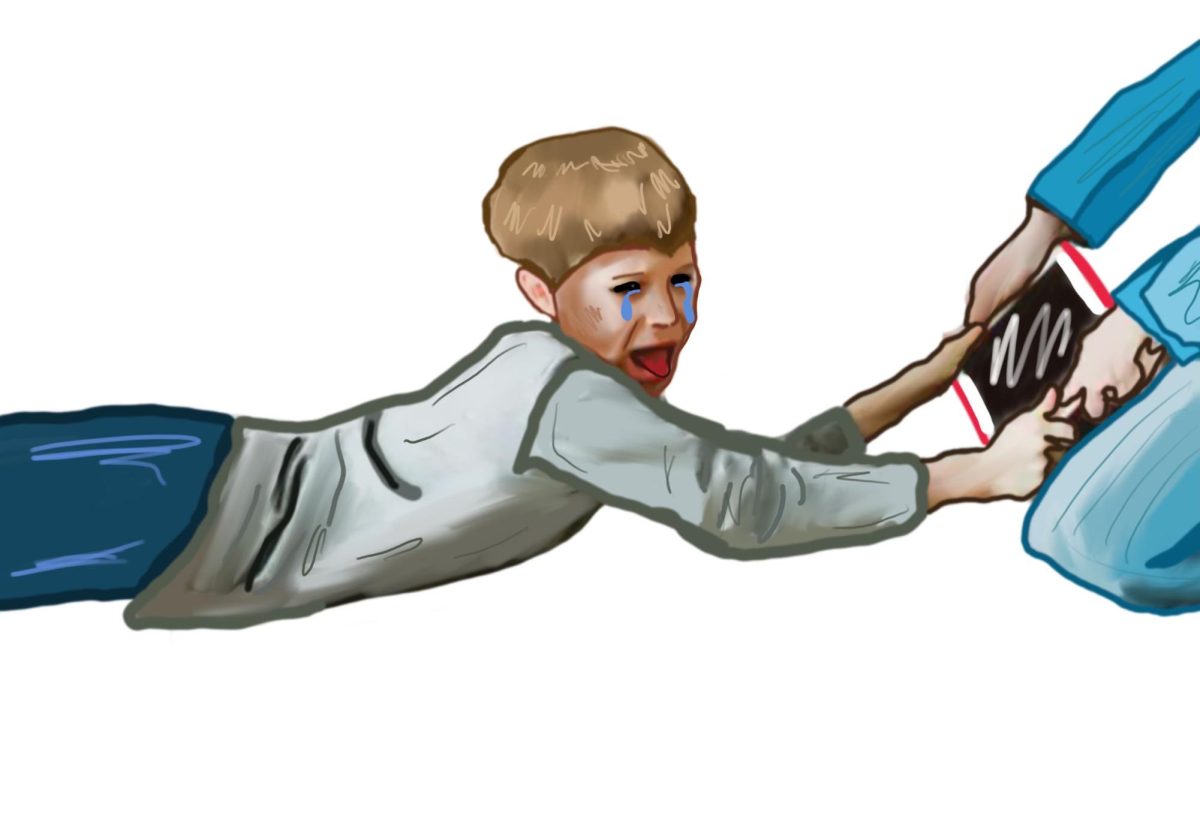When players step onto the court, their minds no longer race about the stresses of everyday life; they simply focus on the game. For many, sports are an escape, a meditation and a shield. Unfortunately, the line between high school and club sports has become blurred, enlisting a fear for some that without playing a sport during the club season, they will not be able to make the high school team due to previously established, unfair relationships.
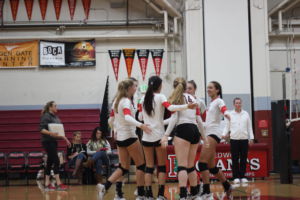
The environment of high school sports is often very competitive. Players try to get one step ahead of their competition in order to ultimately make the team. One of the main ways to gain this extra step is by playing “club” sports —off-season leagues that enable athletes to train and improve their skills in a specific sport. This can be seen as a way for athletes to improve for their high school season, play against better competition, stay in shape and be noticed by college coaches. Some coaches use this as a way to gain extra money or scout incoming talent who play in their league.
Tahan Minakov, the boys’ varsity volleyball coach at Redwood and girls’ varsity volleyball coach at San Rafael, believes that club athletes are more experienced than non-club athletes but that doesn’t mean one is more qualified for the team than the other.
“Some of my best volleyball players have never played club. And I have players who have played club who lose spots to people who don’t play club,” Minakov said. “However, playing year-round volleyball has its advantages. You get the repetition, you are playing against other people who are traveling and you are paying a lot of money to play year round so the competition tends to usually be higher.”
Katie Pease, the former head girls’ varsity volleyball coach and current director of the girls’ program at Absolute Volleyball Club, had a similar view of club athletics and the advantages of playing a sport year-round.
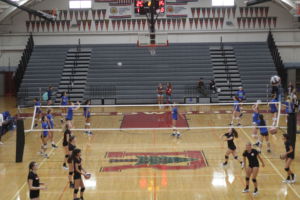
“If you are playing club, you are committing your time. Oftentimes, in every sport, the kids who played club are going to be more skilled and talented because they are playing year-round and they just have more experience,” Pease said.
However, when asked what the main differences she saw between non-club and club athletes, Pease declined to comment.
Pease also declined to comment on the advantages of coaching the same girls for the high school and club season as she said that she has not had the opportunity to coach the current varsity roster during the club season. However, she is the director of a club where 50 percent of the Redwood varsity team plays, according to the Absolute Volleyball rosters.
When questioning the players on whether Pease had coached them during the club season, most players declined to answer, though senior Claire Jackson confirmed that Pease has served as her coach while she played on 13s, 16s, and all throughout high school. Alumna and former Absolute player Adelaide Shunk also said that a majority of the Redwood players played at Absolute during club season, either on her 16’s team directly or another age group. Shunk expressed that because Pease runs the club, she was always either a direct coach or was still around the majority of the time.
Another former Redwood volleyball player who played at Absolute confirmed that Pease coached players in club who are or were on the Redwood roster at one point.
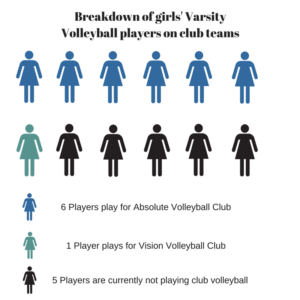
Junior Katie Reis said that she was aware of the environment and attitude of girls’ volleyball prior to her time playing at Redwood, due to her experience with Absolute Volleyball.
“Most of the girls know the coaches because they played club for them. It was a friendly experience for me because I was familiar with the girls I was trying out with,” Reis said.
According to Reis, most high school athletes play club sports after the high school season and continue that sport throughout the rest of the year and during the summer.
“There is a definite advantage because you are practicing; you are playing the sport all year. The coach knows if you are good, knows if you are bad, knows your family,” Reis said. “There is always an advantage to having connections.”
According to Reis, volleyball coaches would most likely favor the person that they knew from club, especially if they liked them. If an athlete didn’t play club, the coaches wouldn’t have that insight and might not want to take a chance on that particular athlete.
In order to combat what Minakov considers unethical practices within high school sports and club leagues, he proposed that Marin enforce specific rules for coaches.
“I know that in other states, high school coaches are not allowed to coach club volleyball. In Southern California, you are not allowed to coach the same age group as the players that you are coaching in high school,” Minakov said. “I think that those systems should be implemented in some fashion across the board because I feel that a lot of people think that there are unfair advantages that come along with [coaching].”
Marin County Athletic League (MCAL) commissioner Susie Woodall has thought of adding a rule similar to Minakov’s idea. Unfortunately, Woodall believes that this would be implausible in Marin.
“If we impose the rule that if you are a club coach then you can’t coach high school, the majority of our coaches wouldn’t stay at the high school. They would go make more money while coaching club,” Woodall said.
Lars Christensen, the current Tamalpais Union High School District (TUHSD) Assistant Superintendent of Human Resources and president of the North Coast Section, believes that although it is possible, this rule would impede on personal freedom.
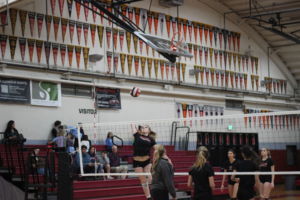
“I work for the TUHSD, but if I chose to take a part-time job or start a part-time company on my non-work time, that is my right to do that. While I have really strong feelings about the potential conflict of interests between club coaches and high school coaches, I have strong feelings about personal freedom,” Christensen said.
Likewise, Minakov feels that the MCAL would have little success trying to enforce these rules.
“I think that what happens in those situations where those rules were put into place [is] coaches were abusing the system and doing it for profit and personal gain,” Minakov said.
Woodall knows of at least one instance where a student’s mother took out a loan so her kid could play a club sport because she felt that her daughter wouldn’t make the team without it.
Christensen thinks that the presence of recruiting, especially in club sports, pressures players into joining a club team in order to make a high school or college team.
“If you don’t sign up for a club team and pay them the associated fees, there is this assumption that you will not make it on [the club coach’s] high school team,” Christensen said.
According to Christensen, these potential conflicts of interest are overridden by personal freedom.
“If I am coaching basketball, but also run an off-season club program, I have got to make sure that it is a different logo, colors and name. The players should be made up of not just people you coach in high school, it should be anyone. If there is a club basketball program in one small area of the county, most of the kids are going to be from one school,” Christensen said.
Christensen went on to say that he is troubled by the potential conflicts of interests, but said that personal freedom will always win.
Reis offers a solution to reduce the unfair relationship between high school and club sports.
“I recognize that they try to separate the club teams from the high school teams. They say not to wear club clothing at Redwood practices but they need to further that. I would say that the coaching staffs need to be separate. That is the only way to completely separate it,” Reis said. “I personally stopped playing because the club coaches being the high school coaches bothered me.”









